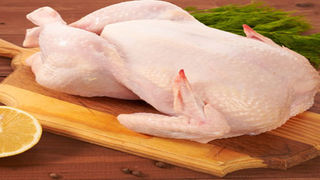
Slaughtered chicken. PHOTO/FILE
|Tips for keeping chicken fresh
What you need to know:
- Freezing is a good preservation method for supermarkets, restaurants and for consumers.
- Chilling is used for short-term storage as the meat is kept in a refrigerator or a cold room.
- More than 10 million chicken are slaughtered in the country annually in a trend that has recorded an upward growth.
Many consumers are attracted to poultry meat because of its low contribution to cardiovascular diseases, lack of cultural and religious inhibitions to its consumption, affordable prices, countrywide distribution of its production, its high nutrition and quality taste. The reasons for the low consumption include high poultry prices arising from costly production.
Production
While the cost of production might not come down soon since feeds are made from maize, our staple food, consumer preference can alleviate the problem.
A study carried out to establish customer preference showed that 25 percent of the respondents prefer poultry meat slaughtered on the same day. The reason being that they suspect preserved meat could be contaminated or has lost its nutritive value or flavour.
However, preservation methods such as freezing can produce poultry meat that looks and tastes the same as fresh. Acceptance of preserved meat by consumers will not only decongest demand especially during the festive season but will also encourage traders to invest in preservation techniques.
Contamination
Poultry meat, just like others, is composed of muscles, connective tissue, fats and bones. Muscle is approximately 75 percent water, 20 percent protein and the remaining 5 percent is fat, minerals and carbohydrates.
When animals are slaughtered in licensed premises, meat is safe for consumption since in such places, ante-mortem (before slaughter inspection) is carried out to ensure that the meat has no diseases.
However, after slaughter, the meat can be contaminated with disease-causing organisms and agents during handling, transportation, storage and marketing. The source of contamination can be the environment, water, meat handlers plus utensils and equipment. The shelf-life of contaminated meat is thus reduced significantly due to resulting spoilage.
To minimise spoilage, some traders have come up with preservation techniques, some which are lethal to the consumer.
One such a method is conservation of chicken in plastic paper bags that are infiltrated with water, a practice that is common in market outlets that do not have cold chain facilities.
Water is a likely source of food-borne bacteria such as coliform while the room temperature that the meat is preserved is a good environment for bacteria multiplication. Simple and affordable preservation techniques should be used.
Some of the affordable techniques include freeze drying, chilling and packaging. In all the preservation methods, only fresh good quality meat is recommended.
Freezing
Freezing is a long-term storage technique that helps retain most of the nutritional value of meat. It is achieved at low temperatures of –18oC or below. At this temperature, most of the water in meat is converted to ice, which is not conducive for growth of micro-organisms that cause meat spoilage.
The temperatures are also unfavourable for enzymatic and chemical reactions that lead to meat spoilage such as rancidity.
Proper packaging of the meat to be preserved is necessary to avoid cold burns. Freezing is a good preservation method for supermarkets, restaurants and for consumers who intend to avoid challenges of festive seasons.
Chilling
Chilling is used for short-term storage as the meat is kept in a refrigerator or a cold room. The latter should have intense air movement. At temperatures of –1 to 0oC, and a relative humidity of more than 95 per cent, poultry meat remains fresh for sevent to 10 days.
The temperatures should be brought down immediately after slaughter and maintained up to the cooking stage. This is a method that can be employed for home preservation, market stores and in fast food outlets that do not require long-term storage. Chilling also precede freeze dying.
Packaging
Packaging safeguards meat by keeping off contaminants, undesired flavours and also assists in moisture retention. Simple packaging involves wrapping water drained meat in plastic films or through use of containers. This can keep meat fresh for only a few hours preferably during transportation or for display purposes.




